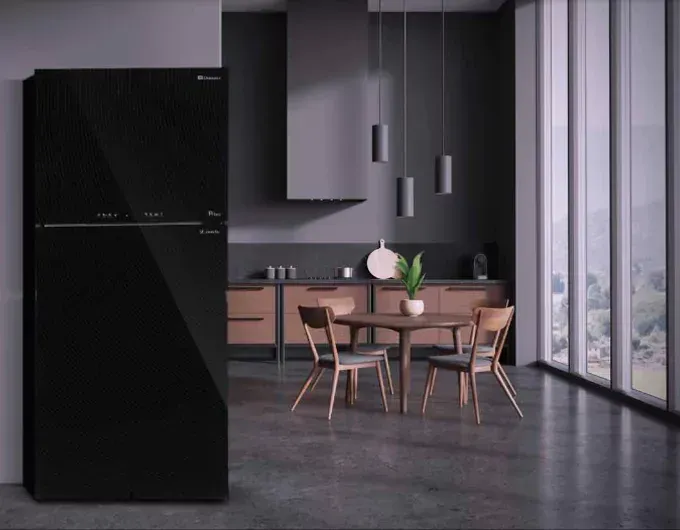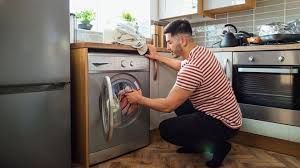Frequently Asked Questions About Top Loading Washing Machine Repair
Q: Why is my top-loading washing machine not spinning?
A: If your top-loading washing machine isn't spinning, it could be due to several common issues. These may include a broken lid switch, a malfunctioning motor coupler, or a faulty drive belt. The lid switch prevents the washer from spinning when the lid is open, so if it's defective, the machine won't spin. The motor coupler connects the motor to the transmission; if it's worn or broken, the motor can't transfer power to the drum. Lastly, a damaged drive belt can prevent the drum from spinning effectively. Checking and replacing these parts can often resolve the issue.
Q: How do I fix a leaking top-loading washing machine?
A: A leaking top-loading washing machine can result from various issues, such as a worn door seal, a loose or damaged hose, or a faulty water pump. Inspect the door seal for any cracks or wear and replace it if necessary. Check all hoses (inlet, drain, and internal) for leaks or loose connections, tightening or replacing them as needed. Additionally, the water pump might have a crack or be malfunctioning, causing leaks during the wash cycle. Addressing these components can usually stop the leaks.
Q: What causes a top-loading washing machine to make loud noises during the spin cycle?
A: Loud noises during the spin cycle can be caused by several factors, including an unbalanced load, worn-out drum bearings, or objects caught in the drum. An unbalanced load can cause the drum to wobble and create noise, so ensure the clothes are evenly distributed. Worn drum bearings can also produce loud, grinding noises and may need to be replaced. Additionally, small objects like coins or buttons can get trapped between the drum and the tub, causing rattling sounds. Removing these objects can help eliminate the noise.
Q: How can I fix a top-loading washing machine that won’t drain?
A: If your top-loading washing machine won't drain, the issue might be due to a clogged drain hose, a faulty drain pump, or a blocked pump filter. First, check the drain hose for any obstructions and ensure it's properly connected. Next, inspect the drain pump for any debris or damage; it may need to be cleaned or replaced. Some models have a pump filter that can get clogged with lint and small items, so cleaning this filter can often resolve the drainage problem.
Q: Why is my top-loading washing machine shaking violently?
A: Violent shaking in a top-loading washing machine is typically caused by an unbalanced load, uneven leveling, or worn suspension rods. Ensure the laundry is evenly distributed in the drum to prevent imbalance. Check if the washing machine is level on the floor; use a leveling tool and adjust the feet accordingly. Suspension rods help absorb the vibrations of the drum, and if they are worn out, they can lead to excessive shaking. Replacing the suspension rods can stabilize the machine.
Q: How do I replace the lid switch on a top-loading washing machine?
A: To replace the lid switch on a top-loading washing machine, first, unplug the appliance for safety. Access the lid switch by removing the control panel screws and lifting the panel. Locate the lid switch, which is usually on the underside of the top lid. Disconnect the wiring harness and remove any screws securing the switch. Install the new lid switch by reversing the removal steps: secure it with screws, reconnect the wiring harness, and reassemble the control panel. Finally, test the machine to ensure the new switch works properly.
Q:What should I do if my top-loading washing machine overflows?
A: If your top-loading washing machine overflows, it could be due to a malfunctioning water level switch, a clogged pressure hose, or a faulty water inlet valve. The water level switch regulates the amount of water in the drum; if it's defective, it might not signal the machine to stop filling. The pressure hose connects to the water level switch and can become clogged, affecting its function. Additionally, the water inlet valve might be stuck open, allowing continuous water flow. Inspect and replace these components as needed to stop the overflow.
Q: How can I fix a washing machine that stops mid-cycle?
A: A washing machine that stops mid-cycle can have issues related to the door lock, control board, or timer. A faulty door lock might not signal the machine to continue if it doesn't securely latch. The control board manages the machine's functions and can cause interruptions if it's malfunctioning. Additionally, a worn-out timer may fail to advance through the cycles properly. Identifying and replacing the problematic component can restore the washing machine's full cycle functionality.
Q: Why does my washing machine smell bad and how can I fix it?
A: A bad smell in your washing machine is often caused by mold, mildew, or detergent buildup. To fix this, run a cleaning cycle with hot water and add a cup of white vinegar or a washing machine cleaner to break down residue and kill bacteria. Ensure to regularly leave the lid open after use to allow the drum to dry out completely. Cleaning the detergent dispenser and rubber seals can also prevent mold growth and keep your washing machine smelling fresh.
Q: What are the signs that my washing machine needs professional repair?
A: Signs that your washing machine needs professional repair include persistent leaks, electrical issues (such as the machine not turning on), loud or unusual noises, failure to spin or agitate, and error codes displayed on the control panel. If basic troubleshooting and part replacements don't resolve these issues, it's best to consult a professional technician to diagnose and repair the underlying problem accurately.
You might also like
Educational Center
Book a Service Today
We will get back to you as soon as possible
Please try again later
Quick & Reliable
We are available 24/7
About Us
Authorized Appliance is an appliance repair contractor referral service. We connect you with appliance contractor in your area. All contractors are operated independently of Authorized Appliance. It is the responsibility of each user to verify that the contractor connected with meets all licensing and insurance requirements in that jurisdiction.
All Rights Reserved - Authorized Appliance




